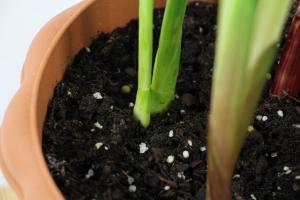What Kind of Cement is Best for Pots and Planters?
If you're looking to create your own pots and planters for your garden or indoor plants, one material that you may consider using is cement. Cement pots can be sturdy and durable, and they can also add a chic industrial vibe to your decor. However, choosing the right type of cement is essential in ensuring that your pots and planters will last for a long time. Here's what you need to know:
Type of Cement
There are many different types of cement on the market, and not all of them are suitable for making pots and planters. The most commonly used type of cement for this purpose is Portland cement, which is made by combining limestone, clay, and gypsum. This type of cement is known for its strength and durability, making it ideal for outdoor use.
Additives
In addition to Portland cement, you can also add various additives to your mix to enhance certain properties of your pots or planters. For example, you could add sand to increase the texture and create a more natural look. You could also add fiber-reinforced concrete, which contains tiny fibers that help to increase the tensile strength of the cement. Other additives include pigments to give your pots and planters a specific color, as well as plasticizers, which can make the cement more workable.
The consistency of your cement mix is also crucial in creating pots and planters that are both functional and aesthetically pleasing. Too much water can weaken the cement, causing it to crack or crumble over time. On the other hand, not enough water can make the mix too thick, making it difficult to work with. The ideal consistency for a cement mix used in pot or planter making is similar to that of thick cake batter.
Finally, it's important to give your cement pots and planters enough time to cure properly. Curing involves keeping the cement moist and at a consistent temperature for a prolonged period, typically around one to two weeks, to help it reach its full strength potential. Be sure to follow the instructions on the cement packaging and avoid moving or disrupting the pots and planters while they cure.
In conclusion, if you're thinking of making your own cement pots and planters, you'll want to choose the right type of cement, add appropriate additives, ensure a consistent mix, and give them enough time to cure. With these factors in mind, you can create beautiful and durable containers to display your favorite plants both indoors and out.

 how many times do yo...
how many times do yo... how many planted tre...
how many planted tre... how many pine trees ...
how many pine trees ... how many pecan trees...
how many pecan trees... how many plants comp...
how many plants comp... how many plants can ...
how many plants can ... how many plants and ...
how many plants and ... how many pepper plan...
how many pepper plan...































